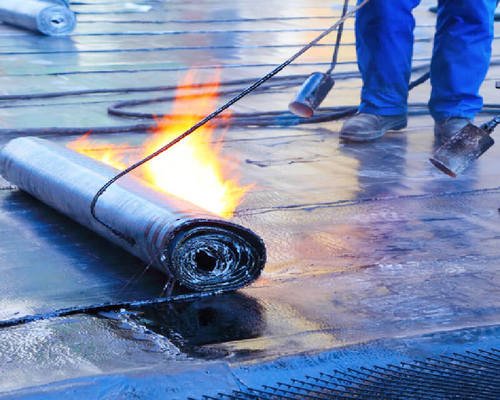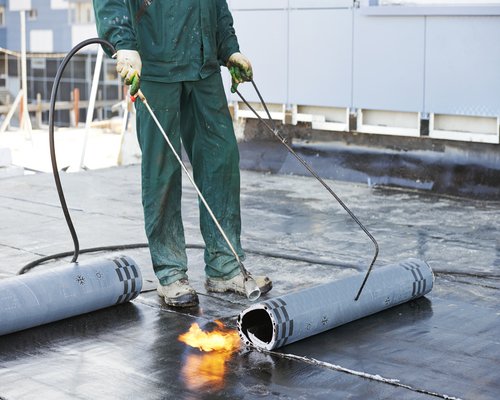Waterproofing Membrane
Waterproofing Membrane
Waterproofing Membrane
Bituminous waterproofing products are perfect for roofing on buildings as they move with the structure as they are too rigid and do not absorb water. Waterproofing membrane systems are designed to protect both residential and commercial buildings through a mixed substance made up of organic liquids that are highly sticky and viscous. It also can be used as a continuous waterproofing membrane for foundations, basements, tunnels, concrete, etc., and applied by flame bonding. Bituminous membranes are made up of more than one product. Bitumen –mixed with a filter (limestones or sand) component such as sand. Polymers are added to the bitumen Such as APP (atactic polypropylene) a plastic additive that gives rigidity and tears resistance, or SBS (styrene butadiene styrene a rubber additive that gives more elastic benefits).
Base Products
Polyester, fiberglass, rag fiber (hessian), and paper. These products are bought in roll format and are pulled through the bitumen mixes on huge rollers. The base Products Become saturated in huge tanks by the tar-like bitumen substance, creating rolls of waterproofing material.
Advantages of waterproofing
- Uniform Thickness.
- The membrane can be polyester reinforced, ensuring dimensional stability.
- Excellent stability at high & low temperatures applications and service.
- Higher tear & impact resistance & excellent.
- Available in plain, aluminum, or mineral finish for light foot traffic, elasticity even.
Process of waterproofing
Surface preparation
- The surface on which the membrane is to be applied must be sound, clean, and dry.
- Dust loose materials, protrusion must be removed.
- Cracks, holes, etc. Must be covered.
Priming
- Apply the bitumen primer at a coverage rate of 4-5 m2/LTR through the help of a Brush /Roller.
Alignment
- Unroll and align membranes rolls and re-rolling correctly keeping an overlap as 75MM side laps 75-100 MM end laps.
Membranes Applications
Torching:
Position the rolls with the correct orientation, heat the lower surface of the rolls with a propane gas torch, and unroll as a bitumen begins to melt, Roll forward and press firmly with a roller/flat shoes against the substrate to bond.
Sealing:
The membrane is needed to seal properly, heat both overlaps, and use a round-tripped trowel to seal the overlap.
Upstands:
All angles and abutments should be sealed with extra care to ensure full bonding, sealing the edges well into the grooves or protective auxiliary materials.
Torch Applied Membranes
Modified Bitumen membrane with a thickness of a least 3mm or preferably 4mm -5mm should be used in the Torch method. Our site is entirely exposed and the outer surface of the membrane is heated with the propane torch. The benefit of using the Roof Grip torch method membrane is very quick and very easy with the small number of working tools without going through the trouble of heating bitumen in boilers.
Self Adhesive Membrane
In certain situations, Places where a torch or heated bitumen equipment cannot be used because of fire hazards. Self-adhesive polymer-modified bitumen membranes are recommended especially in this situation. The Self-adhesive membrane specially prepared elastomer bitumen compound is used from a strong bond with a substrate having characteristics of accepting such adhesives although the initial bond is a very strong effect resulting from solar exposure and the weight of the membrane future strengthen the bond.


Services
We Love To Hear From You
Please call or email the contact form and we will be happy to assist you.
